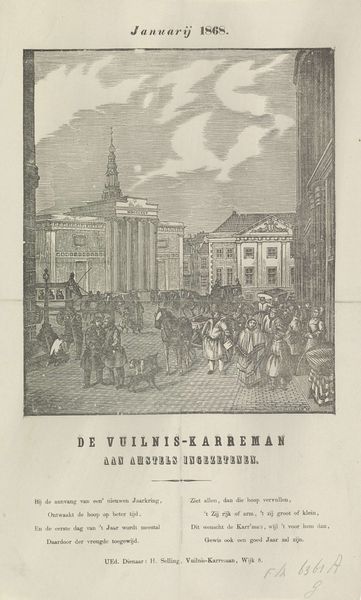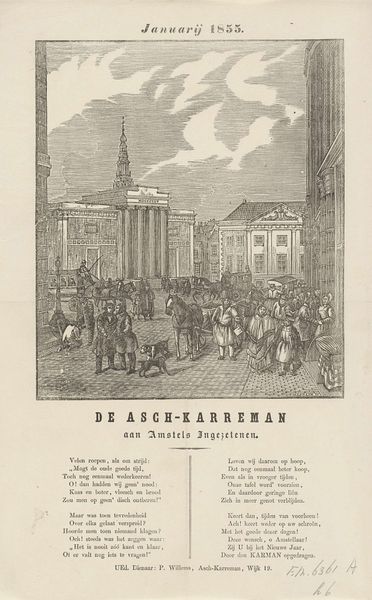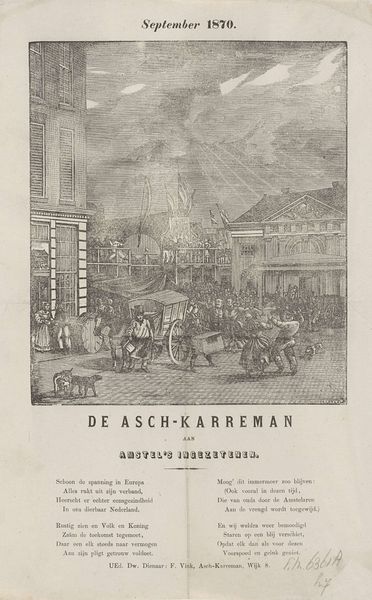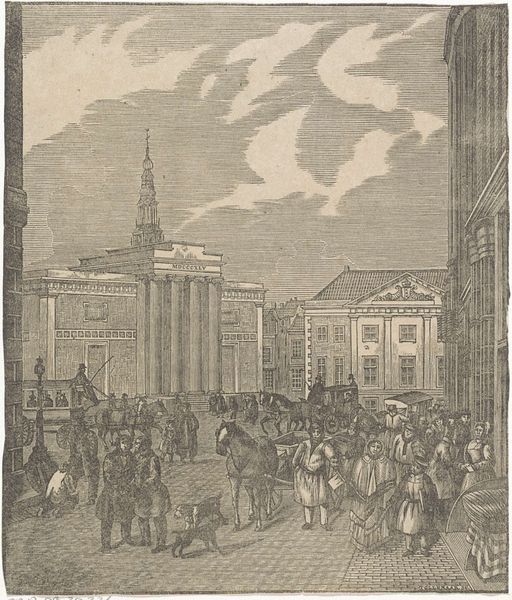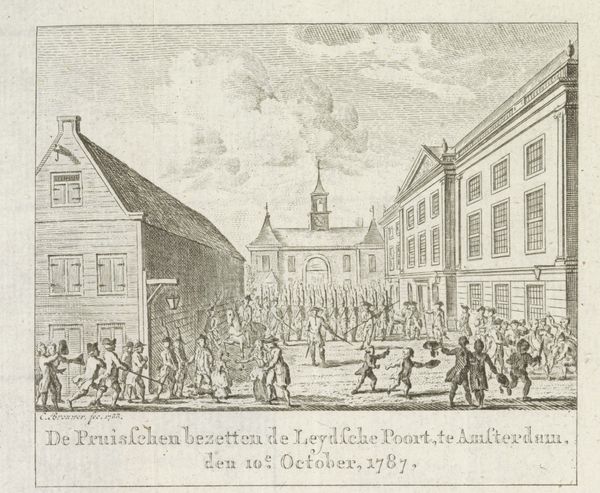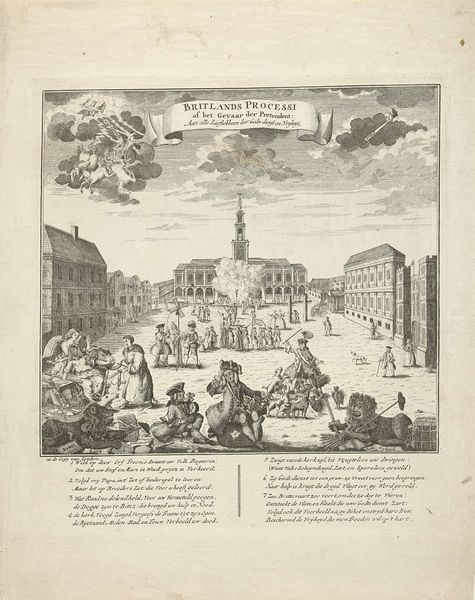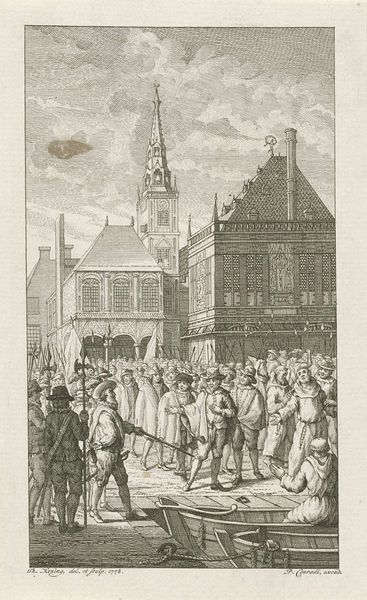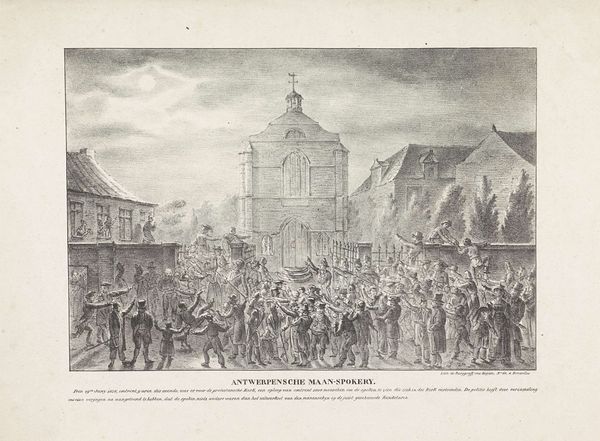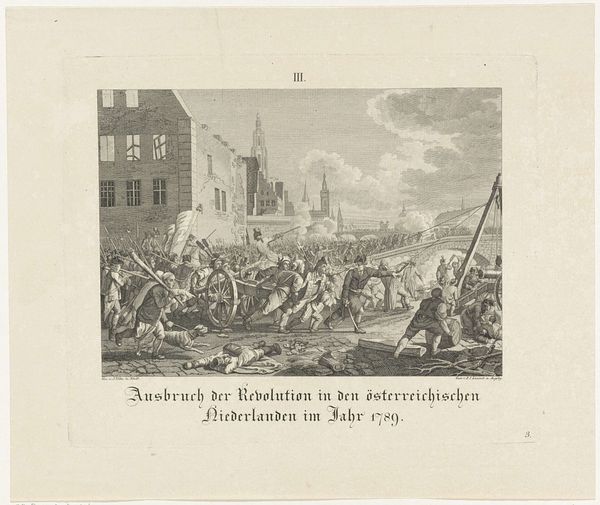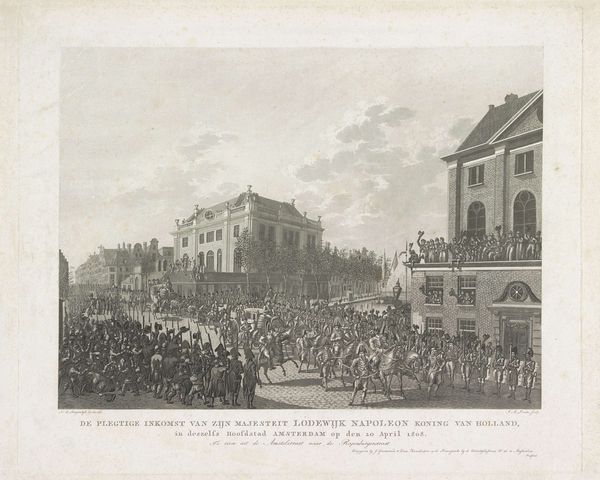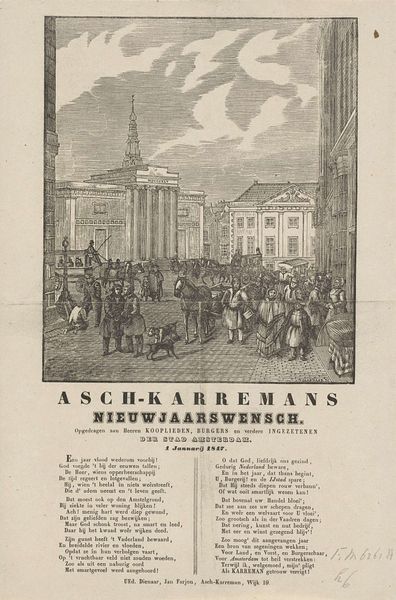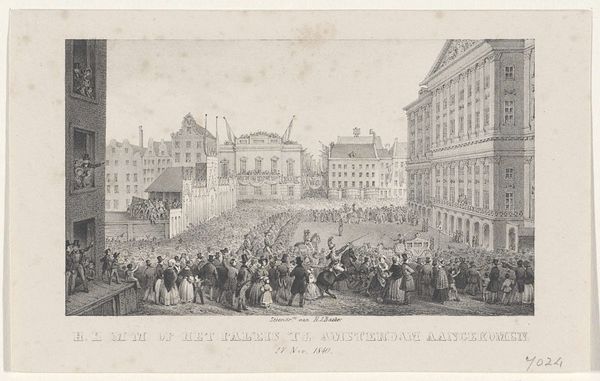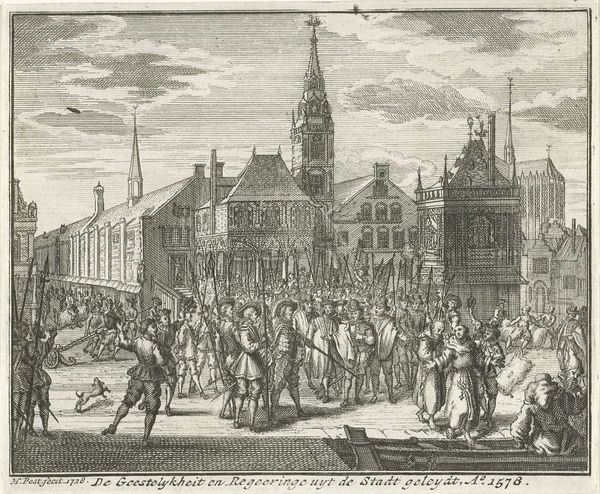
Nieuwjaarswens van de vuilnismannen van Amsterdam voor het jaar 1851 1850 - 1851
0:00
0:00
print, engraving
#
dutch-golden-age
# print
#
cityscape
#
genre-painting
#
engraving
Dimensions: height 342 mm, width 213 mm
Copyright: Rijks Museum: Open Domain
Editor: Here we have an engraving, "New Year's Wish from the Amsterdam Garbage Men for the Year 1851." It feels very civic, with the city buildings in the background and the garbarge men and citizens in the foreground. How do you interpret this work, given its context? Curator: What strikes me is the juxtaposition of the everyday labor of the garbage men with the grandeur of the city and the formality of a New Year's greeting. Consider the text accompanying the image; it suggests civic duty and wishes of prosperity, but addressed to “Amstels Ingezetenen” or Amsterdam's Citizens – how do you think this elevates, or perhaps even complicates, the role of these sanitation workers in the city’s consciousness? Editor: It’s like they're part of the city's face, as necessary as those grand buildings. The text below, though a bit hard to read, appears to frame their work almost as a service *to* the citizens, not just *for* them. Curator: Precisely! Notice the imagery of cleanliness versus the reality of their trade. It becomes a powerful symbol, especially within the frame of a "New Year's Wish". What are they wishing *for* these citizens, and perhaps for themselves, in 1851? Could there be a symbolic layer of wanting to purge not just physical waste, but societal ills too? Editor: That's a good point. Beyond just the city, is there also a cultural reading we could attach to it? Curator: Indeed! Urban hygiene increasingly became associated with moral and social progress, something that continues in various forms of visual messaging even today. This piece could thus represent aspirations for broader societal betterment, using these garbage men as avatars of sorts. Editor: So, the image functions almost like a complex symbolic appeal for renewal, using everyday figures. Thanks, I had not initially thought of its broader societal impact. Curator: It shows how deeply ingrained symbolism can be, even in the seemingly mundane.
Comments
No comments
Be the first to comment and join the conversation on the ultimate creative platform.
